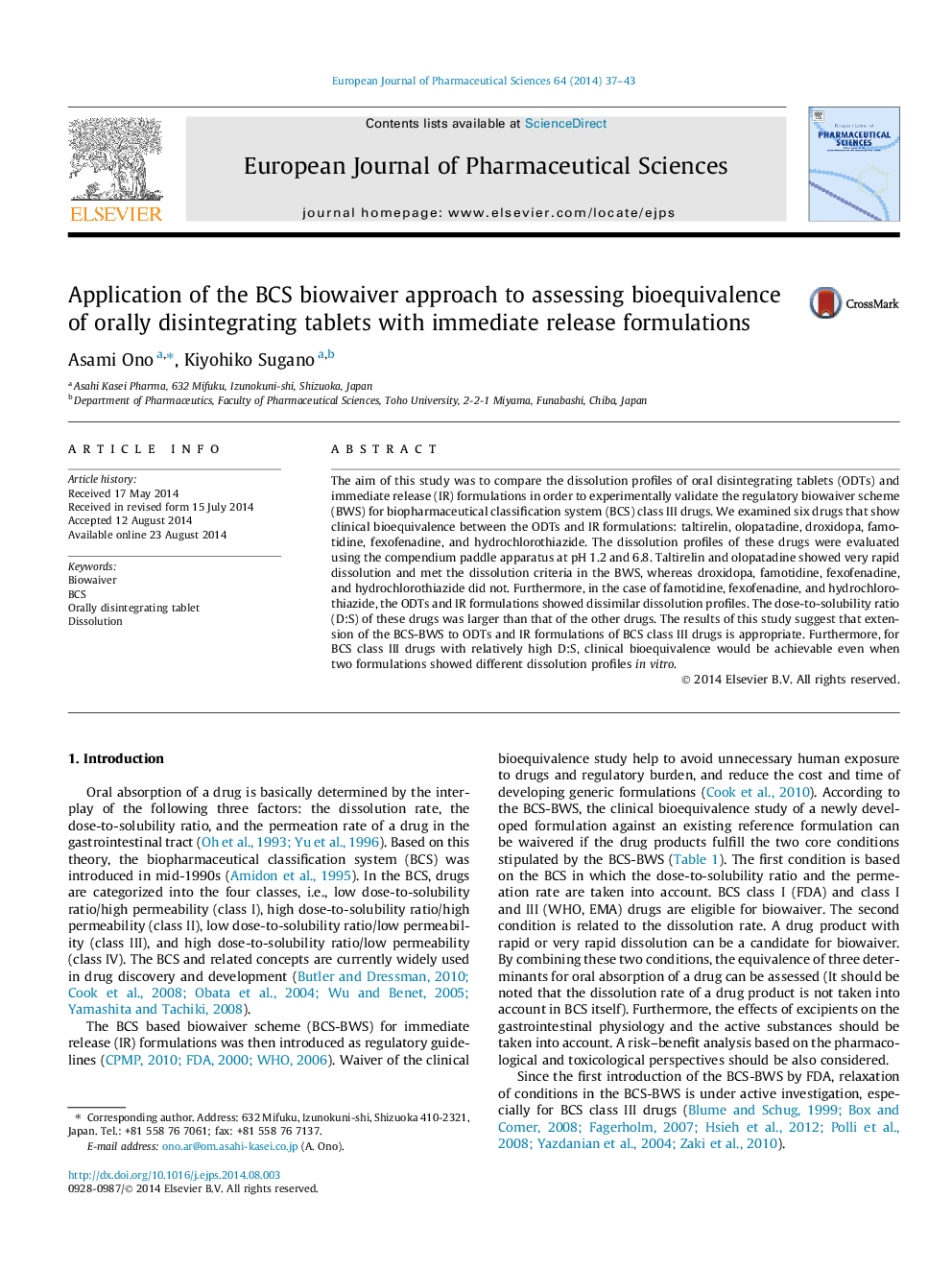| Article ID | Journal | Published Year | Pages | File Type |
|---|---|---|---|---|
| 2480467 | European Journal of Pharmaceutical Sciences | 2014 | 7 Pages |
The aim of this study was to compare the dissolution profiles of oral disintegrating tablets (ODTs) and immediate release (IR) formulations in order to experimentally validate the regulatory biowaiver scheme (BWS) for biopharmaceutical classification system (BCS) class III drugs. We examined six drugs that show clinical bioequivalence between the ODTs and IR formulations: taltirelin, olopatadine, droxidopa, famotidine, fexofenadine, and hydrochlorothiazide. The dissolution profiles of these drugs were evaluated using the compendium paddle apparatus at pH 1.2 and 6.8. Taltirelin and olopatadine showed very rapid dissolution and met the dissolution criteria in the BWS, whereas droxidopa, famotidine, fexofenadine, and hydrochlorothiazide did not. Furthermore, in the case of famotidine, fexofenadine, and hydrochlorothiazide, the ODTs and IR formulations showed dissimilar dissolution profiles. The dose-to-solubility ratio (D:S) of these drugs was larger than that of the other drugs. The results of this study suggest that extension of the BCS-BWS to ODTs and IR formulations of BCS class III drugs is appropriate. Furthermore, for BCS class III drugs with relatively high D:S, clinical bioequivalence would be achievable even when two formulations showed different dissolution profiles in vitro.
Graphical abstractFigure optionsDownload full-size imageDownload high-quality image (146 K)Download as PowerPoint slide
